JRDG Company Special – Aeris DAC
2011-present
Retail price when introduced in the Netherlands in 2013 – 11.500 euro
Retail price in the Netherlands in 2016 – 12.500 euro
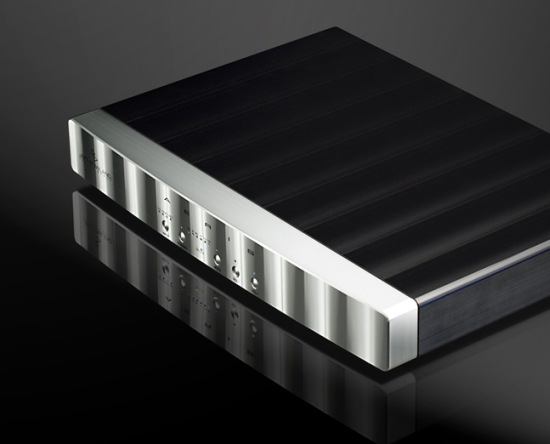
Jeff’s first entry into the digital world – if you’re not counting the ICE-power sidestep (which technically isn’t digital either). The Aeris is classic JRDG component: a heavy solid block of aluminum with machined cavities for the electronics. As with recent preamps, the circuitboard doesn’t hold many components yet the sound is typical Rowland: smooth, liquid, refined and detailed. But there’s also a newfound beat in its step and dynamics aren’t only good on a mirco-level but also on macro-level.
Extensive Review
Aeris + PSU Extensive Review
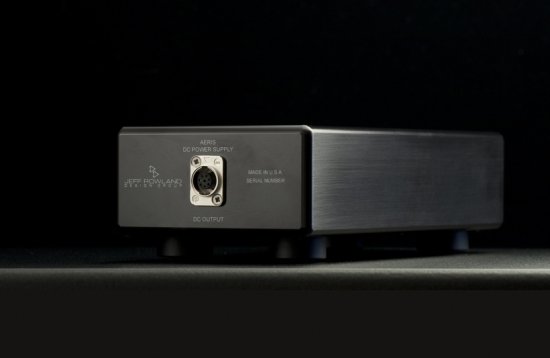
Separately housed power supply. Inside are actually two supplies: one for analog and one for digital. Naturally the power supply is also machined from a single block of aluminium. The unit comes complete with a very long and high quality DC cable.
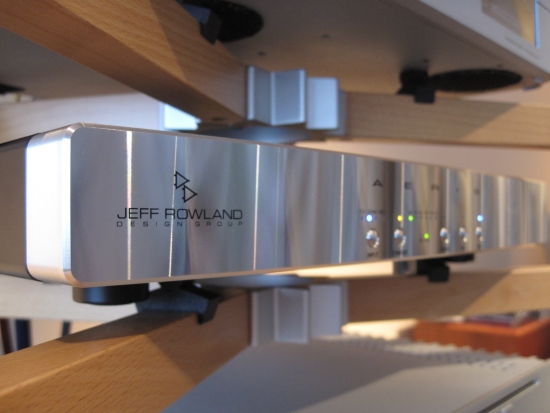
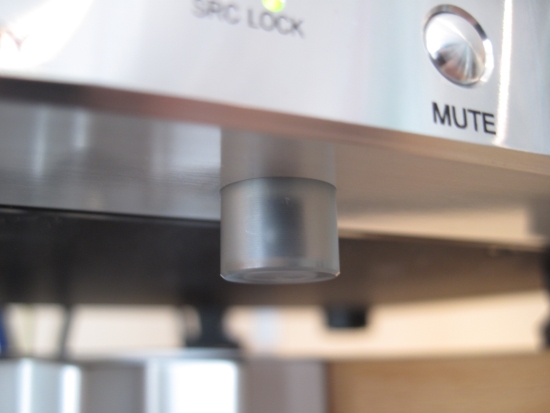
The IR receiver is mounted on the bottom side

Jeff himself holding the Aeris during a Munich high end audio show in 2o12
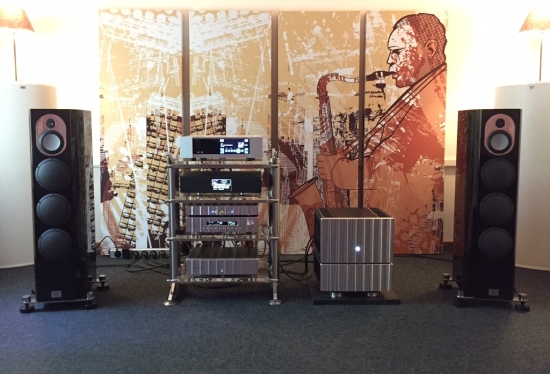
Demo system of Hans van Put (HVP – distributor for the BeNeLux) during the VAD show in 2016 in Veldhoven, the Netherlands. This is where I first heard the PSU.
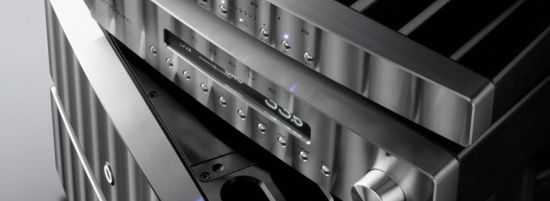
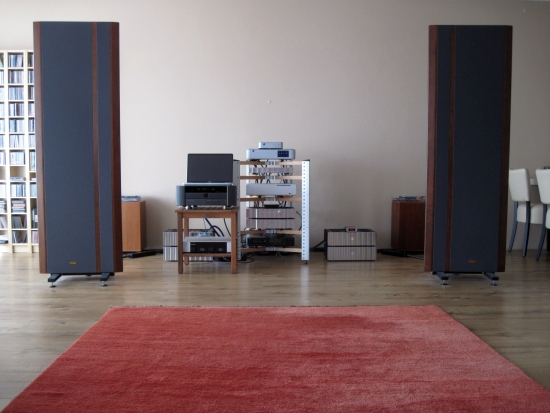
My own system at the time when I reviewed, and purchased, the Aeris DAC. Together with the AudioAanZee Ultra Flow music server it outperformed my then best Meridian Sooloos MD600/818 streaming solution. It also handsomely bettered the PS Audio PWD MKII.
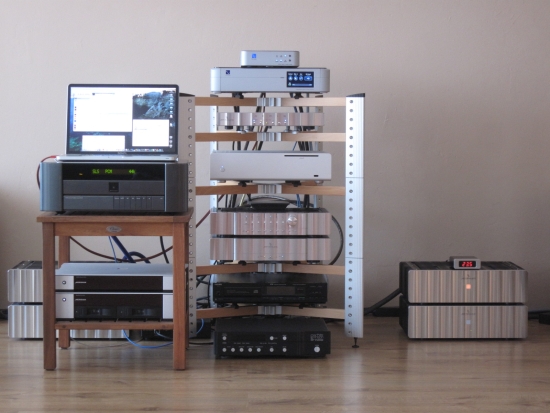
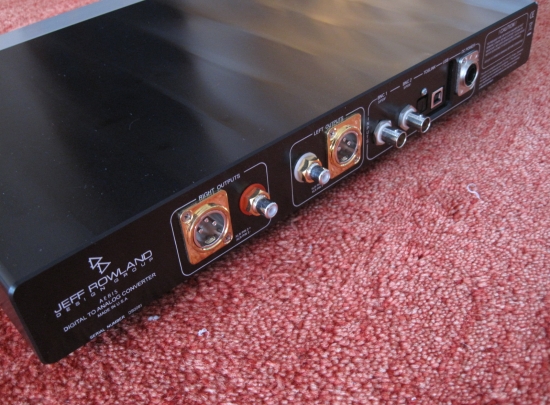
Above: the rear of my Aeris, with 2 coaxial inputs on BNC. Below: an early demo sample (no serial number, but the letters DS instead) of the Aeris, with only one coaxial input on RCA.

Detailed Inside Pictures
Source: Wizard High-End Audio Blog
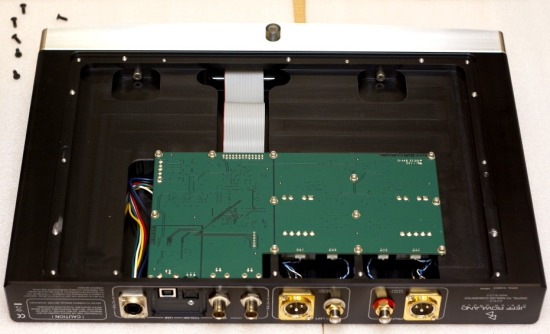
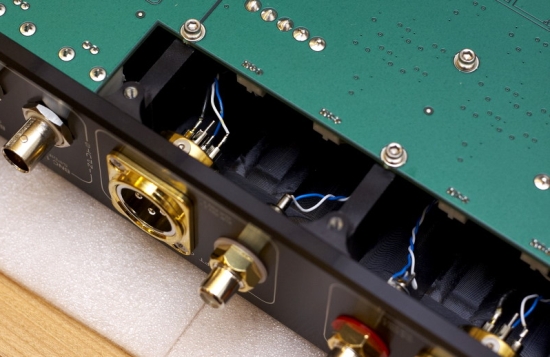
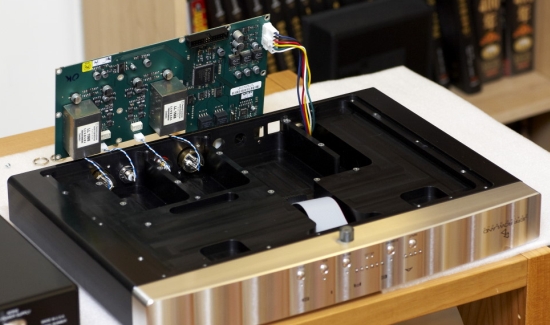
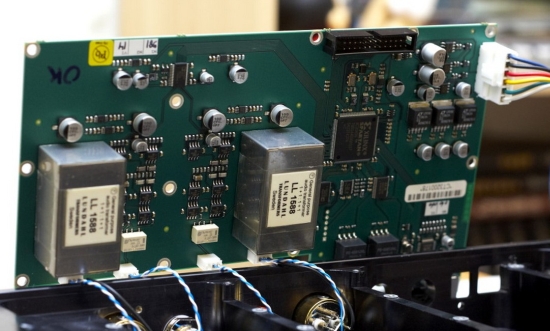
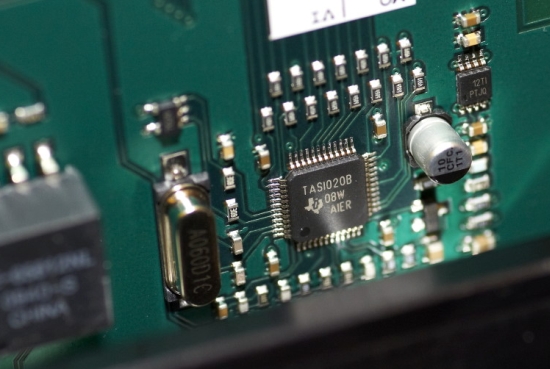
USB receiver from Texas Instruments – TAS1020B
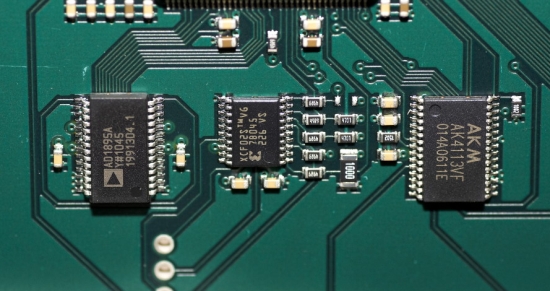
Left – AD1895 192 kHZ Asynchronous Sample Rate Converter
Middle – Xilinx Flash for the Spartan FPGA chip
Right – AKM 4113 24192 SPDIF receiver
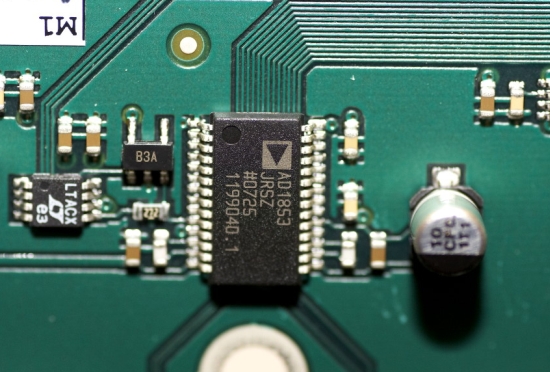
Analog Devices 1853 delta sigma 24 192 dac chip
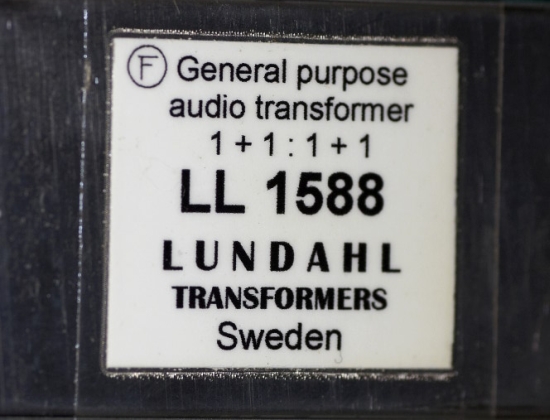
Under the dac chip there are two Lundahl LL1588 transformers
Aeris Technical Features
IsoSyncECS
Isolated Synchronous Error Correction System. Based upon an asynchronous buffer, voltage controlled crystal oscillators, and a 24 bit D/A converter – all under the precise control of an FPGA (Field Programmable Gate Array) running proprietary algorithms.
Bit Perfect and Virtually Jitter Free
Bit perfect conversion with total jitter output noise of less than 10 picoseconds RMS from any input – USB, TOSLINK, and SPDIF.
Multi-Stage Isolated Power Supply
Main power supply is isolated inside an external machined aluminum chassis. Eleven precision high-speed regulators provide low impedance and low noise “point of load” DC current to all analogue and digital circuits.
Isolated Audio and Digital Circuitry
Left and right channel audio output circuits, digital processing, and D/A conversion circuits are isolated within individual milled aluminum pockets resulting in exceptional EMI shielding, and thermal stabilization.
Volume Control
Wide range level control of outputs permit direct connection to power amplifiers.
Driver-Free Operation
The USB interface requires no additional drivers to install or maintain/update.
Cross-Platform
The USB interface is plug-n-play with all operating systems, including PC, Mac, or Linux.
Machined Aluminum Chassis
Precision-machined chassis milled from a solid block of aircraft grade 6061-T6 aluminum, provides exceptional thermal stability, RFI/EMI shielding, and resonance control.
6-Layer Circuit Boards
Multi-layer circuit boards provide extremely low impedance ground and power distribution for remarkably low digital noise contamination.
High-Precision Surface Mount Components
Extensive use of Lead (Pb)-free, low temperature coefficient, active and passive surface-mount components results in significantly smaller loop areas, reduced circuit capacitance and inductance, and introduces less noise than conventional leaded components.
Transformer Coupled Outputs
Transformer balanced XLR line outputs provide outstanding output common-mode noise rejection, eliminate potential ground loops, and ensure compatibility with other equipment.
Output Connectors
Rhodium / Teflon Cardas output connectors for both balanced and unbalanced outputs preserve maximum audio signal integrity.
Remote Control
Allows remote control of volume, mute, standby, and input selection.
Aeris Specifications
Inputs
1x USB Accepts up to 24 bit PCM at 44.1, 48, 88.2, and 96 kHz
1x Toslink Accepts up to 24 bit PCM from 11 – 192 kHz
2x SPDIF Accepts up to 24 bit PCM from 11 – 192 kHz
Outputs
1 pair balanced XLR / 1 pair unbalanced RCA 7 volts RMS max output level
Volume Control Dual-stage attenuation
70 dB range, plus 20 dB overdrive
Software/Drivers
No special drivers necessary
USB interface is plug-n-play with all operating systems, including PC, Mac, or Linux.
Clocks (2X)
20 bit dynamic range Voltage Controlled Crystal Oscillators (VCXO), 44.1 kHz and 48 kHz < 1 picosecond RMS jitter
D/A Converter
Differential output 352.8 kHz, 24 bit Digital Filter Finite Impulse Response (FIR) symetrical. Flat phase and group delay
THD+N
Analogue outputs < 0.0006%
Output Impedance RCA / XLR
120 ohms
More Jeff Rowland
Jeff Rowland Company Special Main Page
Jeff Rowland Company Special DACs
Aeris Extensive Review
Aeris + PSU Extensive Review
Aeris and Wadia 521 compared